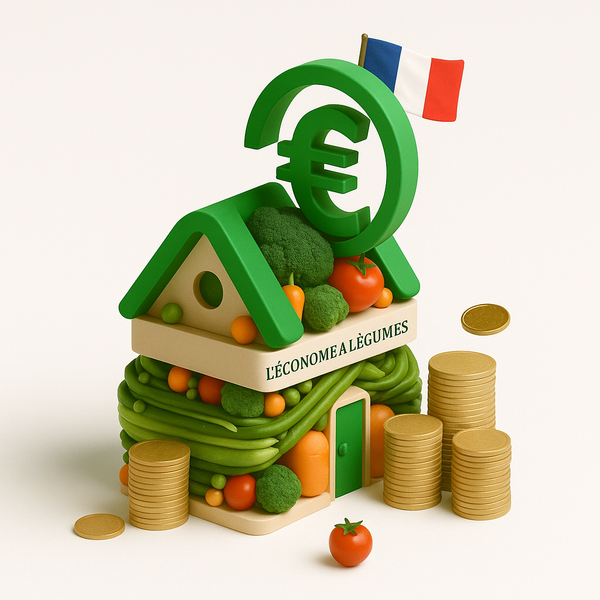Technical sheet of the Malus Sieversii variety (Apple tree or Kazakhstan apple)
-
Fruit flesh color: Crisp and juicy flesh.
-
Skin color: Fruits are pyriform, with a yellow color turning to red.
-
Size and shape: Fruits measure about 6 to 7 cm in diameter. The fruits are pyriform.
-
Fruit maturity: Limited storage at the beginning of winter.
-
Fruit Taste: Excellent, very fruity and sweet flavor. The apples are delicious to bite into.
-
Disease Resistance and Storage: Naturally disease resistant. Storage of this variety is limited to early winter.
-
Comments: Well suited to regions with late cold weather and drought-resistant. The plants can be grafted onto cane apple trees, which makes them very vigorous. They take on a pretty pastel pink color when cooked.
Malus Sieversii: The ancestor of modern apple trees for innovative orchards
Malus sieversii , also known as the Kazakhstan apple tree, represents much more than a botanical curiosity: it is a unique opportunity for market gardeners and professional producers seeking hardiness, biodiversity and innovation. As the direct ancestor of our modern apple varieties, this wild apple tree combines exceptional natural resistance, unrivaled genetic diversity, and tasty fruit.
Arboriverse , a specialist wholesale supplier of apple trees, offers you the opportunity to exploit the full potential of this variety for orchards that combine productivity and sustainability. If you wish to purchase Malus sieversii plants , we offer professional-quality grafted plants, adapted to your needs and delivered directly to your plot.
Authentic, tasty and diverse fruits
A natural taste pleasure
The fruits of Malus sieversii are a real discovery for lovers of authentic and natural flavors. Perfectly suited to the expectations of modern consumers seeking diversity and original products, they stand out for their unique characteristics:
-
Size and shape: Medium size (6 to 7 cm in diameter), with varying shapes ranging from rounded to slightly pyramid-shaped.
-
Color: Yellow skin with red undertones or a bright blush on sun-exposed areas.
-
Texture and taste: White to light yellow flesh, crisp and juicy, with a perfectly balanced sweet and sour taste and subtle aromas.
Versatility of use
Whether for fresh consumption or processing, Malus sieversii fits perfectly into diversified agricultural projects:
-
Fresh consumption: Tasty fruits perfect to be enjoyed as is.
- Culinary transformation:
- Compotes rich in natural flavors.
- Develops a pretty pastel pink hue when cooked, ideal for aesthetic desserts.
- Production of aromatic and slightly acidic apple juice.
-
Extended shelf life: The fruit will naturally keep until March or April, making it perfect for winter markets.
A robust and ecological tree
The natural resistance of Malus sieversii
The Kazakhstan apple tree is renowned for its exceptional robustness, which makes it particularly suitable for low-input or organic orchards:
-
Scab and powdery mildew: Very resistant, it reduces the need for phytosanitary treatments.
-
Fire blight: Not very sensitive, a major advantage for farms seeking sustainability.
-
Climate hardiness: Resistance to extreme temperatures (-30°C) and spring frosts thanks to its late flowering.
A majestic and durable tree
In its natural environment, Malus sieversii can reach up to 25 meters in height. In cultivation, it adapts easily to high-stem or half-stem training as needed. Its exceptional longevity, sometimes exceeding 300 years, makes it a long-term investment for growers.
Why choose Arboriverse for your Malus sieversii plants?
As a specialist wholesale supplier of apple trees, Arboriverse is committed to providing you with professional quality Malus sieversii plants, sourced from specialist nurseries and ready to meet the challenges of modern growers.
What we offer:
-
Certified quality: Plants rigorously selected to guarantee vigor, robustness and production potential.
- Suitable formats:
- Bare roots for economical, large-volume planting.
- Half-stem or high-stem for a ride adapted to your projects.
- Scions or cattails for a denser and more productive crop.
-
Fast and careful delivery: Directly to your plot, anywhere in France.
-
Competitive prices: Take advantage of our producer prices to maximize the profitability of your investments.
-
Technical support: Expert advice for setting up your orchard and ensuring successful production.
By choosing Arboriverse , you are choosing a trusted partner, dedicated to the success of your agricultural projects. Buy your Malus sieversii plants today and integrate this ancestral variety into your crops to diversify your production.
Practical advice for successfully growing Malus sieversii
Ideal growing conditions
To exploit the full potential of your Malus sieversii plants, a few simple recommendations are enough:
-
Climate: Thrives in temperate to cold climates with harsh winters.
-
Soil: Prefers well-drained, slightly acidic soils, but also tolerates clay or limestone soils.
-
Exposure: A location in full sun is crucial to optimize fruit set and color.
Simplified maintenance
-
Light pruning: Annual pruning to maintain a balanced structure and promote production.
-
Nutrient intake: Compost or well-rotted manure in spring.
-
Irrigation: Although drought resistant, regular watering during growth ensures optimal production.
Pollination and yield
Malus sieversii is not self-fertile. To maximize fruiting, plant it near pollinator-compatible varieties such as:
- Queen of Reinettes
- Golden Delicious
- Gala
A strategic opportunity for professional producers
Malus sieversii represents a true revolution for farms looking to stand out in the market. Thanks to its unique assets—natural resistance, genetic diversity, and tasty fruits—it fits perfectly into projects focused on sustainability and biodiversity.
By collaborating with Arboriverse , a specialist wholesale supplier of apple trees, you gain access to solutions tailored to your needs. Whether you're diversifying your crops or creating an innovative orchard, our team is here to support you. Take advantage of our producer prices and launch your project with exceptional plants. Malus sieversii isn't just a variety: it's an investment in the future of arboriculture.

